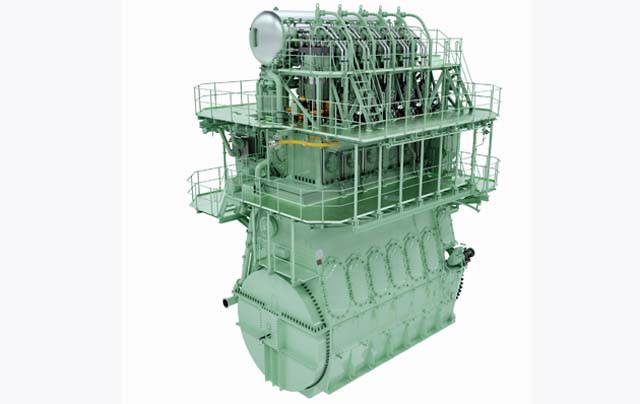Japanese shipping company Nippon Yusen Kaisha (NYK) has ordered a total of eight 5G70ME-GA Mk. 10.5 engines in connection with the construction of four 174,000m3 LNG carriers.
All eight engines will feature MAN Energy Solutions’ proprietary EGRBP (Exhaust Gas Recirculation ByPass) emissions-reduction technology.
Bjarne Foldager, Head of Two-Stroke Business, MAN Energy Solutions, said: “We developed this engine for easy application to most contemporary LNG carrier designs and, indeed, all ME-GA orders to date have been exclusively for this segment. Demand for the engine has been continuously strong since its introduction, especially due to its accompaniment by our self-developed EGR system that comes proven by more than a decade of in-service, operational experience and optimisation.”
Thomas S Hansen, Head of Promotion and Customer Support, MAN Energy Solutions, said: “We have now logged more than 278 ME-GA engine orders since May 2021. Of these, seven vessels have already entered service with a total of 14 ME-GA engines on board. We have obtained ME-GA engine orders from both Korean and Chinese shipyards, but this is the first order from this prominent owner and we are thankful for NYK’s trust in our product. We have a strong and long-lasting relationship with NYK and are happy to now count it among our ME-GA customers.”
The MAN B&W ME-GA engine is designed to offer a low CAPEX solution aimed at LNG carriers that are able to use boil-off gas as a source of fuel. Based on the MAN B&W dual-fuel design with minimal installation requirements, the ME-GA uses an ignition concept and gas-admission system that are said to deliver safe and reliable operation. The ME-GA features low operational costs, simple supply and purging concepts, and reduced maintenance costs for its fuel-gas supply system. It joins the established ME-GI Diesel-cycle engine in MAN Energy Solutions’ two-stroke-engine portfolio, which offers both low- and high-pressure, dual-fuel solutions for operation on LNG.
MAN Energy Solutions’ EGR reduces methane-slip emissions compared to first-generation, Otto-cycle engines without EGR, while simultaneously improving fuel efficiency in both gas and fuel-oil operation. Ultimately, EGR actively reduces emissions and improves efficiency in both Tier II and Tier III. The MAN EGR system was applied to a commercial project for the first time in 2013. Initially focused on achieving NOx Tier III compliance, the system has since matured into a robust engine-tuning tool that today has accumulated orders for more than 278 engines.



